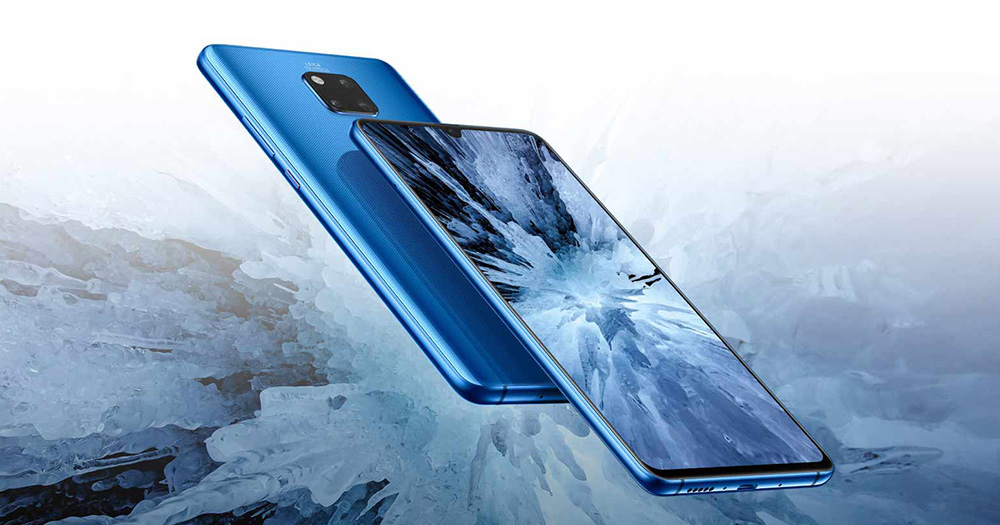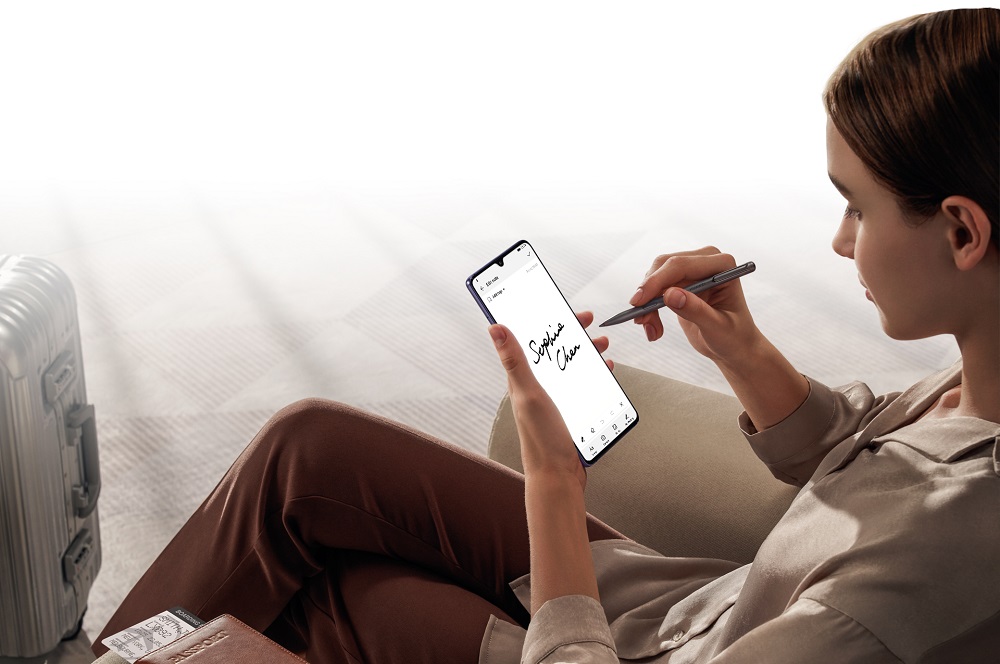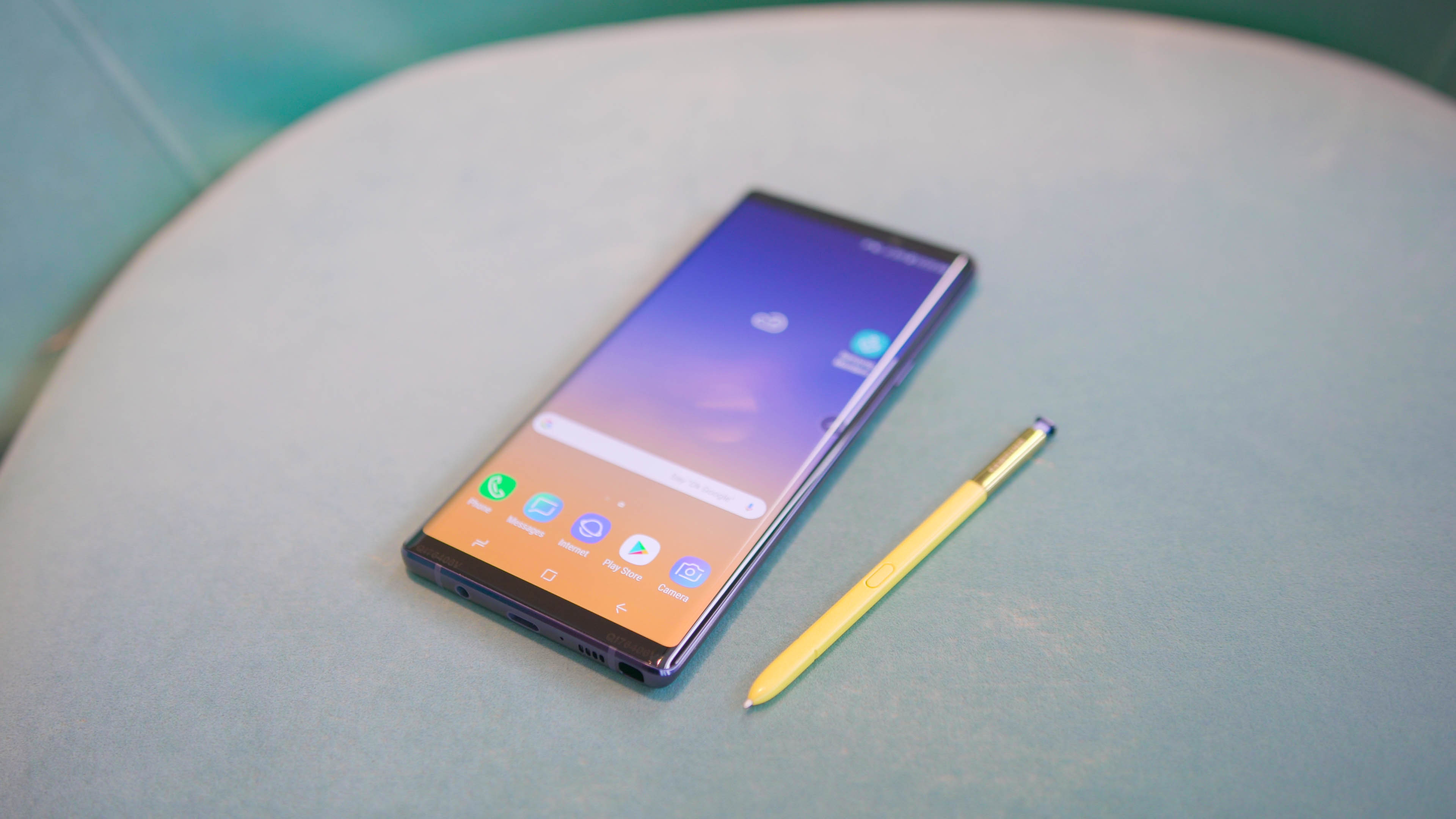When we talk about smartphones with large screens, powerful internals, and stylus, the first device that comes to mind is Samsung’s Galaxy Note series, especially the Galaxy Note 9. That’s about to change though with the release of the Huawei Mate 20 X. Let’s compare them side by side to see which one looks better on paper.

| Huawei Mate20 X | Samsung Galaxy Note9 | |
|---|---|---|
| Display | 7.2" 18.7:9 OLED, FHD+ (2244 x 1080), 346ppi, 87.9% screen-to-body ratio | 6.4" 18.5:9 Super AMOLED, QHD+ (2960 x 1440), 516ppi, 83.4% screen-to-body ratio |
| CPU | Kirin 980 octa-core processor (2x Cortex A76 2.6GHz + 2x Cortex A76 1.92GHz + 4x Cortex A55 1.8GHz) | Exynos 9810 octa-core processor (4x 2.7GHz Mongoose M3 + 4x 1.8GHz Cortex-A55) |
| GPU | Mali-G76 MP10 | Mali-G72 MP18 |
| RAM | 6GB | 6GB, 8GB |
| Storage | 128GB | 128GB, 512GB |
| Expandable storage | up to 256GB via NM card | up to 512GB via microSD |
| Rear camera | 40MP (Wide Angle Lens, F1.8 ) + 20MP (Ultra Wide Angle Lens, F2.2) + 8MP (Telephoto 3x optical zoom, F2.4) Triple Leica Camera, AI Stabilization | 12MP (Wide, F1.5) + 12MP (Telephoto 2x optical zoom, F/2.4) dual pixel PDAF, OIS |
| Front camera | 24MP, F2.0 | 8MP, F1.7 |
| SIM | Dual-SIM | Dual-SIM |
| LTE | 4G LTE Cat. 21 | 4G LTE Cat. 18 6CA |
| Wi-Fi | WiFi 802.11 a/b/g/n/ac, 2.4GHz and 5GHz | WiFi 802.11 a/b/g/n/ac, 2.4GHz and 5GHz |
| Bluetooth | Bluetooth 5.0 | Bluetooth 5.0 |
| GPS | Dual GPS, GLONASS, BeiDou | GPS with aGPS, GLONASS, BeiDou |
| Biometrics | Fingerprint scanner (rear), Face Unlock | Fingerprint scanner (rear), Iris Scanner, Face Unlock |
| NFC | Yes | Yes |
| IR Blasters | Yes | n/a |
| Features | ~ IP53 water resistance ~ Invisible Dual speakers ~ Graphene Film + Vapor Chamber ~ Huawei M-Pen | ~ IP68 water resistance ~ Dual Speakers ~ Heart-rate scanner ~ Heatpipe cooling ~ Samsung Dex built-in ~ S-Pen |
| 3.5mm earjack | Yes | Yes |
| USB | USB Type-C 3.1 | USB Type-C 3.1 |
| Battery | 5,000mAh battery w/ SuperCharge | 4,000mAh battery w/ Fast Charge, Wireless Charging |
| OS | EMUI 9.0 (Android 9.0 Pie) | Samsung Experience v9.5 (Android 8.1 Oreo) |
| Dimensions, Weight | 174.6 x 85.4 x 8.15 mm, 232 g | 161.9 x 76.4 x 8.8 mm, 201 g |
| Color | Midnight Blue, Phantom Silver | Metallic copper, lavender purple, ocean blue, midnight black |
Summary of advantages
Huawei Mate 20 X:
* Larger screen
* Better benchmark performance
* Triple rear cameras with higher main camera resolution
* Higher front camera resolution
* Higher battery capacity
* Android 9.0 Pie out of the box
Samsung Galaxy Note 9:
* Higher display resolution
* 8GB RAM + 512GB storage model
* Support for 512GB microSD cards
* Higher telephoto camera resolution
* Iris scanner
* Heart rate scanner
* IP68 water resistance
* Samsung Dex
* Wireless Charging
This looks like an interesting comparison as both devices have merits that are enough to sway buyers either way. Starting with the screen, the Mate 20 X wins in terms of size, however, if you want the highest resolution possible, the Galaxy Note 9 wins, hands down.

When it comes to camera specs, the Mate 20 X has the advantage for having three cameras including a 40MP main, 20MP wide, and 8MP telephoto. The Galaxy Note 9 uses dual rear cameras consisting of two 12MP sensors but has a higher telephoto camera resolution compared to the Mate 20 X. As for selfies, the Mate 20 X can produce sharper images thanks to the 24MP sensor compared to the Galaxy Note 9’s 8MP. As for image quality, we’ll know once we’ve compared both phones.

In terms of biometrics, the Galaxy Note 9 wins by having three scanners: fingerprint, iris, and face, making it more secure, yet easier for the user to unlock the device. In comparison, the Mate 20 X only has a fingerprint scanner and face unlock. Storage-wise, the Note 9 also wins by having a 512GB model with support for up to 512GB microSD cards.

As for features, both have water resistance although the Galaxy Note 9 has better protection with its IP68-rated body compared to the Mate 20 X’s IP53. Both also have dual speakers, stylus, and its own cooling systems, although the Galaxy Note 9 comes with a heart-rate sensor and Samsung Dex built in.

For the battery, the Mate 20 X wins by sporting a massive 5,000mAh battery with SuperCharge. The Galaxy Note 9 sports a smaller 4,000mAh battery with Fast Charge but supports wireless charging.

When it comes to the engine under the hood, both are powered by flagship chipsets from their respective companies. The Mate 20 X packs the new Kirin 980 accompanied with a Mali-G76 MP10 GPU, and 6GB RAM, while the Galaxy Note 9 has the Exynos 9810 with Mali-G72 MP18, and up to 8GB RAM. We’re yet to test both devices side-by-side but we can have an idea by looking at the Mate 20 Pro’s benchmark scores and compare it with the Note9’s:
| Benchmarks | Huawei Mate 20 Pro | Samsung Galaxy Note 9 |
|---|---|---|
| AnTuTu | 273,233 | 239,067 |
| PCMark | 7,645 (Work 2.0) | 4,896 (Work 2.0) |
| 3DMark | 3,507 (SSE, OpenGL 3.1) | 3,341 (SSE - OpenGL 3.1) |
| 4,203 (SSE, Vulkan) | 2,870 (SSE - Vulkan) | |
| GeekBench 4 | 3,295 (Single-Core) | 3,731 (Single-Core) |
| 9,831 (Multi-Core) | 9,038 (Multi-Core) | |
| AndroBench | 824 MB/s (Read) | 823.46 MB/s (Read) |
| 194 MB/s (Write) | 192.86 MB/s (Write) |
Looking at the results, the Mate 20 X’s Kirin 980 performs better in numbers, but when it comes in real-world usage, you wouldn’t notice the difference. The software is a big factor as well with the Mate 20 X having the upper hand for having the new Android 9.0 Pie. The Note 9 came with Android 8.1 Oreo but we can expect it to be upgraded to the new flavor soon.

Lastly, the price. The Galaxy Note 9 starts at PHP 55,990USD 954INR 80,883EUR 909CNY 6,948 for the 6GB RAM + 128GB storage model, and PHP 75,990USD 1,295INR 109,775EUR 1,233CNY 9,430 for the 8GB RAM + 512GB storage. We’re yet to know the price of the Mate 20 X, but if it’s priced lower, that’s another plus for Huawei.
What about you guys, which one will you pick? Let us know in the comments below.

YugaTech.com is the largest and longest-running technology site in the Philippines. Originally established in October 2002, the site was transformed into a full-fledged technology platform in 2005.
How to transfer, withdraw money from PayPal to GCash
Prices of Starlink satellite in the Philippines
Install Google GBox to Huawei smartphones
Pag-IBIG MP2 online application
How to check PhilHealth contributions online
How to find your SIM card serial number
Globe, PLDT, Converge, Sky: Unli fiber internet plans compared
10 biggest games in the Google Play Store
LTO periodic medical exam for 10-year licenses
Netflix codes to unlock hidden TV shows, movies
Apple, Asus, Cherry Mobile, Huawei, LG, Nokia, Oppo, Samsung, Sony, Vivo, Xiaomi, Lenovo, Infinix Mobile, Pocophone, Honor, iPhone, OnePlus, Tecno, Realme, HTC, Gionee, Kata, IQ00, Redmi, Razer, CloudFone, Motorola, Panasonic, TCL, Wiko
Best Android smartphones between PHP 20,000 - 25,000
Smartphones under PHP 10,000 in the Philippines
Smartphones under PHP 12K Philippines
Best smartphones for kids under PHP 7,000
Smartphones under PHP 15,000 in the Philippines
Best Android smartphones between PHP 15,000 - 20,000
Smartphones under PHP 20,000 in the Philippines
Most affordable 5G phones in the Philippines under PHP 20K
5G smartphones in the Philippines under PHP 16K
Smartphone pricelist Philippines 2024
Smartphone pricelist Philippines 2023
Smartphone pricelist Philippines 2022
Smartphone pricelist Philippines 2021
Smartphone pricelist Philippines 2020
Yeb says:
Having more scanners does not make a device more secure. More convenient, yes. But not more secure.
Habagat says:
I’m not sure if I missed it but there was no mention of the peripherals? S-Pen for Note 9 and that gaming keypad something for the Mate 20 X?
WSBONN says:
I Chose larger screen, better battery and better camera